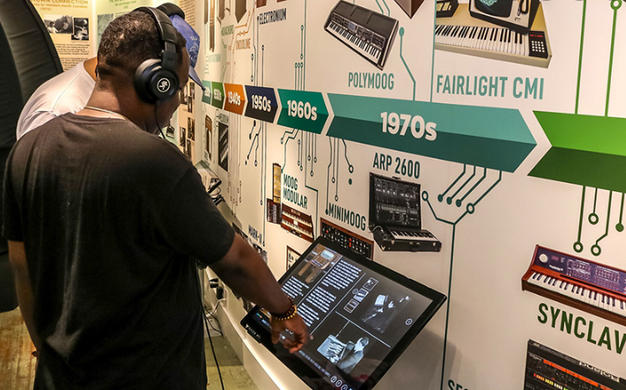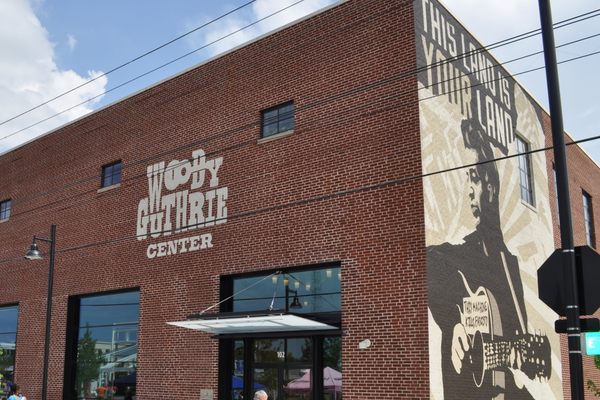AO Edited
Moogseum
A museum dedicated to the legacy of Bob Moog and his pioneering synthesizers.
This interactive space is dedicated to the work and legacy of Bob Moog and his groundbreaking Moog synthesizers.
Robert Arthur Moog, better known as Bob, was an American engineer best known for his work with synthesizers and electronic music. Moog didn’t invent the synthesizer, but he did revolutionize it. Before Bob, synthesizers were huge, unwieldy machines that took up an entire room and cost far too much to make them commercially viable.
Moog and his company Moog Music managed to radically change the nature of synthesizers, making them smaller, more affordable, and playable via a keyboard. And he later went on to create other now-fundamental synth concepts such as the pitch wheel, envelope generation, modularity, and voltage control.
Moog began work on the Moog synthesizer in 1964, and it wasn’t long before it began having a profound effect on music. One of the first major albums to make use of the Moog was Pisces, Aquarius, Capricorn & Jones Ltd. by the Monkees, which topped the United States Billboard chart in 1967. Around the same time, the Moog synthesizer was appearing on albums by The Doors, The Rolling Stones, and The Byrds, and in 1968 hit the headlines on Wendy Carlos’ Grammy-winning album Switched-On Bach (Bach, but done with a Moog).
In 2006, one year after Moog’s death, his family created the Bob Moog Foundation, the aim of which was to remember and carry forward his pioneering legacy, and to “ignite creativity at the intersection of music, science, history, and innovation.”
The Moogseum, which opened in Moog’s adopted hometown of Asheville, North Carolina, on May 23, 2019 (on what would have been his 85th birthday), was part of this project. Here, Moog’s legacy is brought to life with a series of multi-sensory and interactive exhibits.
The 1,400-square-foot museum features touchscreen kiosks containing hundreds of archival items detailing Moog’s life and work. Another exhibit tells the story of Leon Theremin, one of Moog’s influences, and lets visitors play a theremin (instructions included) while learning all about waveforms.
In the “How Electricity Becomes Sound” immersive visualization dome, meanwhile, visitors can step inside a circuit board to learn how electricity is turned into sound. And then there’s a re-creation of Moog’s workbench, which includes prototype modules from the late-1960s.
Know Before You Go
The Moogseum is located at 56 Broadway Street in downtown Asheville, North Carolina. Operating hours are from 11 a.m. to 5 p.m. daily. Admission to the museum is $9.75; children seven and under can enter for free.





















Follow us on Twitter to get the latest on the world's hidden wonders.
Like us on Facebook to get the latest on the world's hidden wonders.
Follow us on Twitter Like us on Facebook